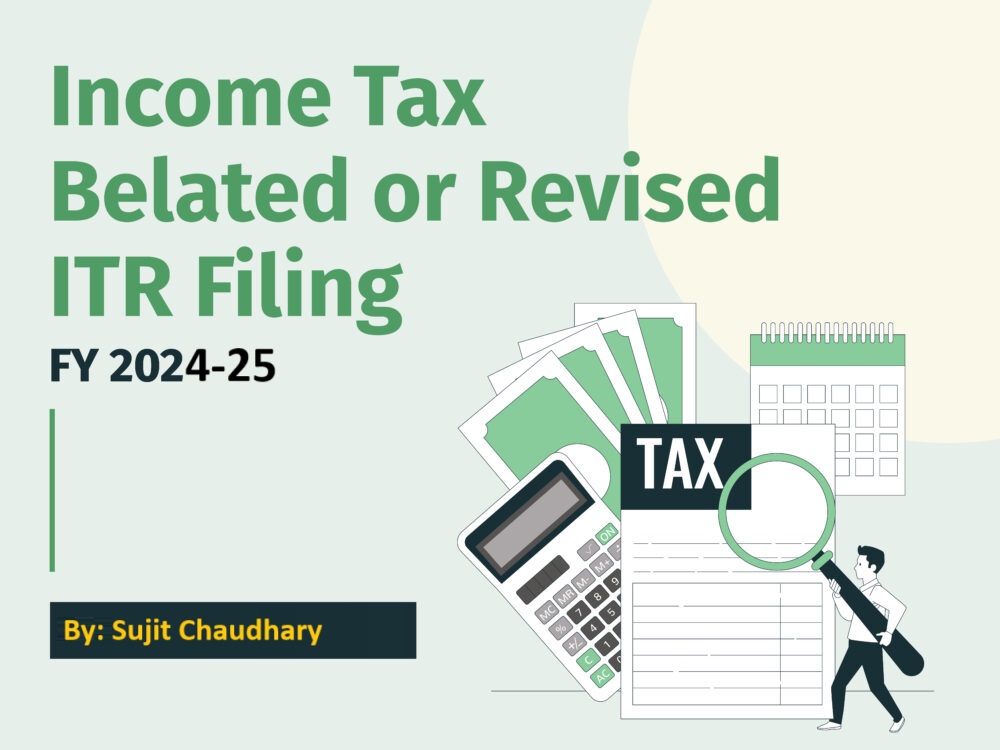The Letter of Intimation issued under Section 143(1) of the Income Tax Act is a critical communication sent by the Income Tax Department after processing a taxpayer’s Income Tax Return (ITR). It serves as an acknowledgment and provides a summary of the return filed by the taxpayer, along with any discrepancies or adjustments identified during the automated processing.
What is Section 143(1)?
Section 143(1) outlines the preliminary assessment procedure conducted by the Income Tax Department. This process ensures that the information provided in the ITR matches the department’s records. The assessment is carried out electronically without requiring the taxpayer’s presence.
Key Features of Section 143(1)
- Automated Processing:
The return is processed electronically, comparing the details provided by the taxpayer with information available in the department’s database. - Adjustments:
Minor adjustments may be made, such as:
Arithmetical errors.
Incorrect claims (e.g., excessive deductions).
Mismatches in tax paid or TDS (Tax Deducted at Source).
- Three Possible Outcomes:
No Demand, No Refund: The return is processed without any discrepancies.
Refund: If the tax paid exceeds the liability, the department issues a refund.
Tax Demand: If there’s an underpayment of tax, the taxpayer is notified of the additional amount payable.
Contents of a Letter of Intimation Under Section 143(1)
The intimation letter includes:
- Return Summary: Details of income, deductions, and taxes as per the ITR filed.
- Adjustments Made: Any discrepancies identified and corrected during processing.
- Tax Payable or Refund Due: Final computation showing whether additional tax is owed or a refund is due.
- Instructions for Action: Steps to pay outstanding taxes or claim refunds.
Timeline for Issuance of Section 143(1) Intimation
The intimation must be sent within 9 months from the end of the financial year in which the return was filed.
For example, if a return for FY 2023-24 is filed, the intimation must be sent by December 31, 2025.
What to Do After Receiving a Section 143(1) Intimation?
- Verify the Details:
Cross-check the income, deductions, and tax computations with your ITR.
Identify any discrepancies or adjustments made by the department.
- Refund Claim:
If eligible for a refund, the amount will be credited directly to your bank account linked to your PAN.
- Tax Demand:
Pay the additional tax liability mentioned in the intimation within the specified time to avoid penalties and interest.
- Disagreement with Adjustments:
File a rectification request under Section 154 through the e-filing portal if you believe the adjustments are incorrect.
Example of Section 143(1) Intimation
Scenario:
A taxpayer declares a total income of ₹8,00,000 in their ITR and claims a deduction of ₹1,50,000 under Section 80C. However, the department’s records show only ₹1,00,000 as eligible under Section 80C.
Outcome:
The intimation letter will:
Adjust the deduction to ₹1,00,000.
Recompute the total taxable income as ₹7,00,000.
Notify the taxpayer of the additional tax liability due to the mismatch.
Common Errors Leading to Section 143(1) Adjustments
- Mismatch in TDS: Tax credits claimed in the ITR do not match Form 26AS.
- Incorrect Deductions: Overstated deductions under Sections 80C, 80D, etc.
- Arithmetical Errors: Mistakes in calculating total income or taxes.
- Inaccurate Bank Details: Errors in refund processing due to incorrect bank account information.
Importance of Section 143(1) Intimation
- Transparency: Ensures taxpayers are informed about any discrepancies in their returns.
- Compliance Check: Highlights errors or mismatches, encouraging accurate tax filing.
- Faster Refunds: Facilitates prompt processing of refunds in cases of overpayment.
Conclusion
The Section 143(1) intimation is an essential tool for maintaining transparency and accuracy in the tax filing process. Taxpayers should review the intimation carefully and take necessary action, whether it’s paying additional taxes, claiming refunds, or rectifying errors. Staying informed and compliant not only avoids penalties but also ensures a seamless tax filing experience.
Let me know if you’d like further details or assistance!


